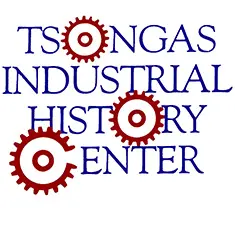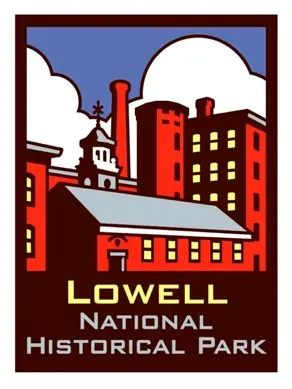All of our programs have been reviewed to ensure their relevance to state and national standards. (See the Education Program descriptions).
See our Change in the Making webpage.
State Curriculum Frameworks
Massachusetts State Standards
Grade 3 – Social Studies
Topic 2. The geography and Native Peoples of Massachusetts
- 3. Explain the diversity of Native Peoples, present and past, in Massachusetts and the New England region.
- a. the names of at least [one] native groups (e.g., Penacook)
- c. physical features and their influence on the locations of traditional settlements
- d. contributions of a tribal group from the area of the school (e.g., language, literature, arts, trade routes, food such as corn, beans, and squash, useful items such as baskets, canoes, wampum, and useful knowledge of medicinal plants, words such as powwow and moccasin, and many names for waterways, hills, mountains, islands and place names, such as the Connecticut and Merrimack Rivers, Mount Wachusett, the Taconic Range, Nantucket, Natick, Seekonk, Agawam, Chicopee)
Topic 5. The Puritans, the Massachusetts Bay Colony, Native Peoples, and Africans
- 2. Explain … how [European colonists] moved west from the Atlantic coast, and the consequences of their migration for the Native Peoples of the region.
- 5. Explain the importance of … the practice of bartering – exchanging goods or services without payment in money—in the development of the economy of colonial Massachusetts, using materials from historical societies and history museums as reference materials.
New Hampshire State Standards
Grade 3-4 – Economics
- SS:EC:4:1.1: Identify the factors of production and explain how businesses use these to produce goods and services (Themes: D: Material Wants and Needs, G: Science, Technology, and Society)
- SS:EC:4:2.2: Explain why scarcity requires individuals, households, businesses and governments to make economic choices and how economics choices always involve and opportunity cost. (Themes: A: Conflict and Cooperation, D: Material Wants and Needs, G: Science, Technology, and Society)
- SS:EC:4:4.1: Describe different methods people use to exchange goods and services, e.g., barter or the use of money. (D: Material Wants and Needs)
Grades 3-4 – Geography
- SS:GE:4:1.2: Display spatial information on maps and other geographic representations, e.g., home-to-school routes or setting in appropriate children’s literature. (Themes: C: People, Places, and Environment, G: Science, Technology, and Society, J: Human 7Expression and Communication)
- SS:GE:4:2.2: recognize how physical and human processes together shape places, e.g., the relationship between elevation and population density in a region or the characteristics of regions along the same latitude. (Themes: C: People, Places, and Environment)
- SS:GE:4:2.4: Illustrate the ways in which regions change, e.g., changes in local neighborhoods or change to the United States through westward expansion. (Themes: C: People, Places, and Environment, E: Cultural Development, Interaction, and Change, I: Patterns of Political and Social Interactions)
- SS:GE:4:3.5: Investigate how humans interact with ecosystems, e.g., forest management or impacting wetlands (Themes: C: People, Places, and Environment, D: Material Wants and Needs, F: Global Transformations)
- SS:GE:4:4.2: Describe the types and historical patterns of migration, e.g., chain migration or slave trade. (Themes: C: People, Places, and Environment, I: Patterns of Political and Social Interactions)
- SS:GE:4:5.1: Illustrate how people modify the physical environment, e.g., irrigation projects or clearing land for human use. . (Themes: C: People, Places, and Environment, D: Material Wants and Needs)
Grade 3-4 – US/NH History
- SS:HI:4:4.1: Explore major developments and changes in economic productivity, e.g., adoption of Native American crops or use of mass production. (Themes: C: People, Places, and Environment, F: Global Transformations, G: Science, Technology, and Society)
- SS:HI:4:4.2: Explore the impact of important technological inventions, e.g., new forms of transportation or housing. (Themes: E: Cultural Development, Interaction, and Change, G: Science, Technology, and Society)
- SS:HI:4:4.3: Investigate the evolution of the United States economy, e.g., the transition from farms to factories or the trend from small local stores to shopping malls. (Themes: D: Material Wants and Needs G: Science, Technology, and Society)
- SS:HI:4:5.3: Trace the changes in the roles and lives of women and children and their impact on society, e.g., the family or workplace. (B: Civic Ideals, Practices, and Engagement, I: Patterns of Social and Political Interaction)
Common Core State Standards
Speaking and Listening Standards, K-5
Comprehension and Collaboration
Grade 3:1: Engage effectively in a range of collaborative discussions (one-on-one, in groups, and teacher led) with diverse partners on grade 3 topics and text, building on others’ ideas and expressing own clearly. (C: Ask questions to check understanding of information presented, stay on topic, and link their comments to the remarks of others, D: Explain their own ideas and understanding in light of the discussion.)
Speaking and Listening Standards, K-5
Presentation of Knowledge and Ideas
Grade 3:4: Report on a topic or text, tell a story, or recount and experience with appropriate facts and relevant, descriptive details, speaking clearly at an understandable pace.
Grade 3:6: Speak in complete sentences when appropriate to tasks and situation in order to provide requested details or clarification.


